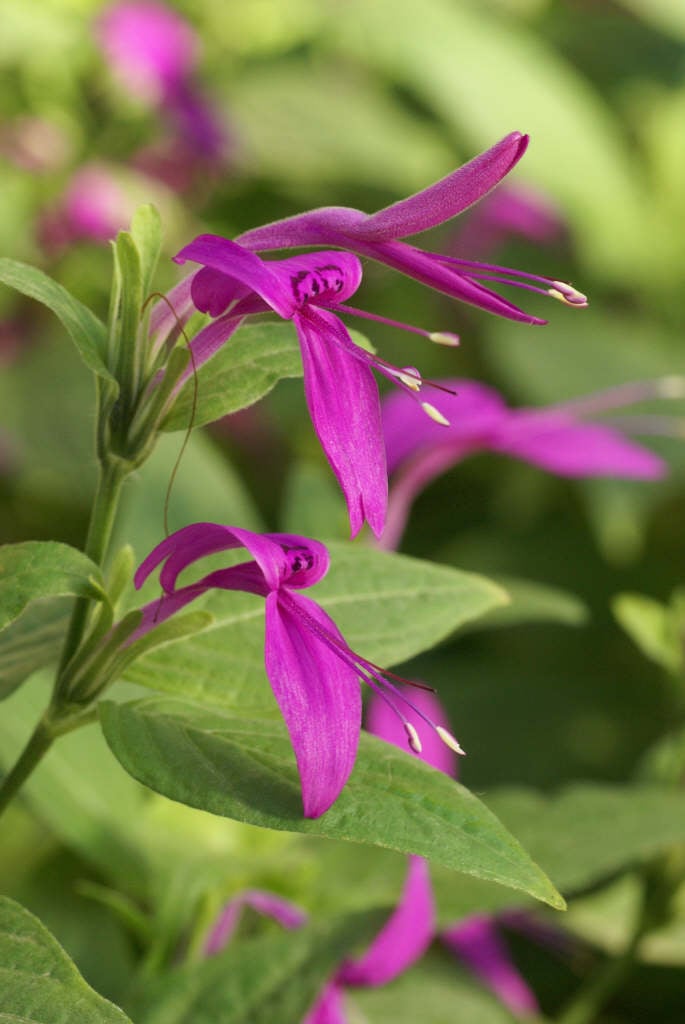Peristrophe speciosa
purple rice plant
An evergreen subshrub to 120cm in height, with elliptic green leaves to 8cm long, and greyish stems. The flowers are magenta, in clusters of 2-3 in the axils of leafy bracts on a branched panicle. They are tubular, to 5cm long, strongly 2-lipped, borne mostly in winter
Size
Ultimate height
1–1.5 metresTime to ultimate height
2–5 yearsUltimate spread
0.5–1 metresGrowing conditions
Moisture
Moist but well–drained, Well–drainedpH
NeutralColour & scent
| Stem | Flower | Foliage | Fruit | |
| Spring | Green | |||
|---|---|---|---|---|
| Summer | Green | |||
| Autumn | Green | |||
| Winter | Purple | Green |
Position
- Full sun
- Partial shade
Aspect
East–facing or West–facing
Exposure
Sheltered Hardiness
H1BBotanical details
- Family
- Acanthaceae
- Native to GB / Ireland
- No
- Foliage
- Evergreen
- Habit
- Bushy
- Genus
Peristrophe are tropical perennials or subshrubs with simple leaves and showy flowers with long, slender tubes. They can be solitary or in clusters of 2-3, surrounded by a ring of narrow bracts, and arranged in loose heads
- Name status
Correct
- Plant range
- India
How to grow
Cultivation
Grow in containers using soil based compost in bright filtered light. Shelter from midday sun. Water well from spring to autumn, but let the surface of the compost to dry a little between waterings. Apply liquid balanced liquid feed monthly. Reduce watering in winter
Propagation
Propagate by softwood cutting in late spring, early summer. Bottom heat may be beneficial
Suggested planting locations and garden types
- Patio and container plants
Pruning
Trim back after flowering
Pests
Glasshouse red spider mite, glasshouse whitefly and other glasshouse pests may be a problem
Diseases
Generally disease-free
Get involved
The Royal Horticultural Society is the UK’s leading gardening charity. We aim to enrich everyone’s life through plants, and make the UK a greener and more beautiful place.

